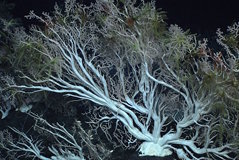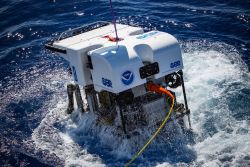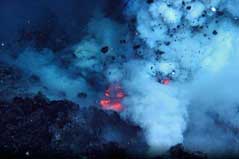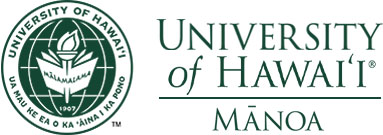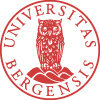Escanaba Trough: Exploring the Seafloor and Oceanic Footprints
May 26 - June 14, 2022
Expedition Summary
Between May 26 - June 14, 2022, a team of scientists explored Escanaba Trough, a feature located about 200 miles off the coast of northern California. Through remotely operated and autonomous underwater vehicle dives, they made several unexpected geological discoveries that will enhance our understanding of the hydrothermal sulfide system within the trough.
Over the course of the expedition, a total of 11 dives were conducted using Woods Hole Oceanographic Institution (WHOI)’s remotely operated vehicle (ROV) Jason, exploring at depths as great as 3,300 meters (2.05 miles). Extensive geologic, geochemical, and biological samples were collected using ROV Jason, including 65 rocks, 41 discrete biological specimens, 101 push cores, and 6 hydrothermal vent fluid samples collected in titanium alloy gas-tight bottles. These gas-tight fluid samples will be analyzed for their gas and liquid composition by scientists with the NOAA Pacific Marine Environmental Laboratory (PMEL) to get more information about the source of the venting fluids and their subseafloor interactions with rocks and sediments.
The team also conducted 12 CTD (conductivity, temperature, and depth) casts and collected 388 water samples for further analysis. The NOAA team will be analyzing water samples from both CTD and ROV Jason Niskins bottles for gasses, trace metals, and metal-binding organic ligands. Additional water samples were collected by other scientists on board to investigate radionuclides to date the water samples and genomic studies to understand what organisms are present in active and inactive sites.

Additionally, 10 dives were completed using WHOI’s autonomous underwater vehicle (AUV) Sentry, allowing for the testing of new seafloor mapping techniques using the vehicle.
Initial findings from the expedition included hydrothermal activity in a region that was previously considered to be inactive and the discovery of unexpected volcanic features and pockmarks. Miniature Autonomous Plume Recorders from NOAA PMEL were deployed on ROV Jason and AUV Sentry to detect particle, temperature, and oxidation/reduction potential (ORP) anomalies. ORP anomalies, which can be excellent indicators of hydrothermal activity and fluid flow, were detected in 3 out of 10 AUV Sentry dives and on all ROV Jason dives.
The team also found several occurrences of inactive sulfide minerals as well as hydrothermal minerals in unexpected places.
Visit the U.S. Geological Survey expedition page to learn more.
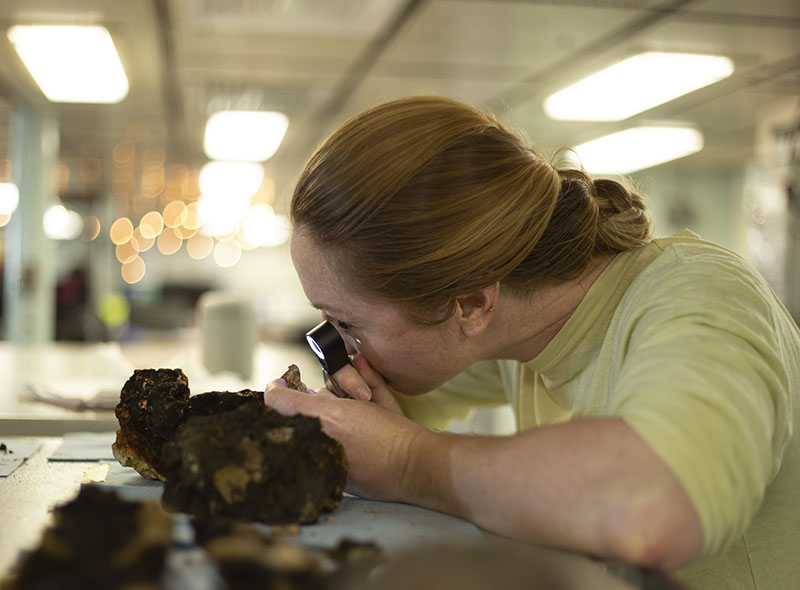
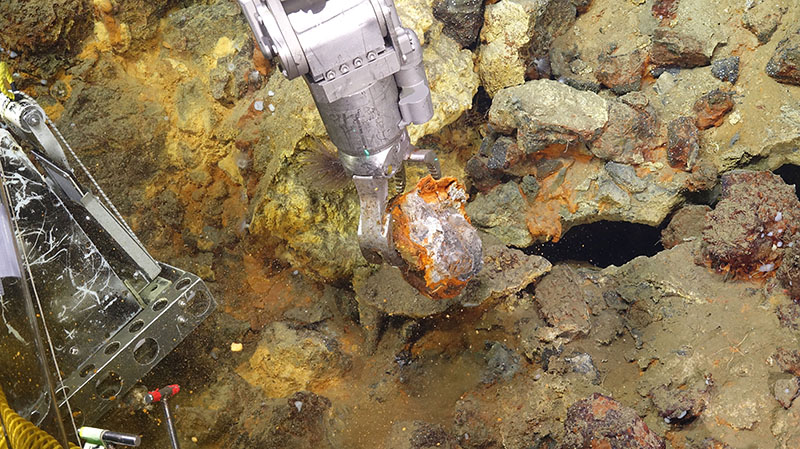
Related Links
About Escanaba Trough
About Hydrothermal Vents
About Critical Minerals
Education Themes
Partners
This interagency project involving NOAA, the U.S. Geological Survey, and the Bureau of Ocean Energy Management will be a significant contribution to the National Strategy for Mapping, Exploring, and Characterizing the United States Exclusive Economic Zone (pdf) (national strategy). Under the national strategy, the recently released draft Strategic Priorities for Ocean Exploration and Characterization of the United States Exclusive Economic Zone (pdf) highlights science needs in five thematic areas: benthic ecology, cultural heritage, marine resources, seafloor hazards, and the water column. Understanding critical minerals is also a priority articulated in the Energy Act of 2020.
Media Contacts
Emily Crum
Communication Specialist, NOAA Ocean Exploration
ocean-explore-comms@noaa.gov
John Romero
Bureau of Ocean Energy Management, Public Affairs
john.romero@boem.gov
Peter Pearsall
U.S. Geological Survey Public Affairs
ppearsall@usgs.gov
Paul Laustsen
U.S. Geological Survey Public Affairs
plaustsen@usgs.gov
Funding for this expedition was provided by NOAA Ocean Exploration via its Ocean Exploration Fiscal Year 2019 Funding Opportunity and through the National Oceanographic Partnership Program (NOPP). NOPP was established by Congress to advance economic development, protect quality of life, strengthen science education and communication, and assure national security by improving knowledge of the ocean through partnerships among federal agencies, academia, industry, and non-governmental organizations.
This expedition is being conducted as part of EXPRESS: Expanding Pacific Research and Exploration of Submerged Systems, a multi-year, multi-institution cooperative research campaign in deep sea areas of California, Oregon, and Washington, including the continental shelf and slope.
